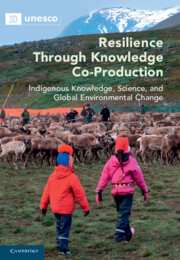 Resilience through Knowledge Co-Production
Resilience through Knowledge Co-Production from Part I - From Practice to Principles
Published online by Cambridge University Press: 02 June 2022
This chapter presents a co-produced research that took place since 2009 between interdisciplinary scientists and herders from a Sami reindeer community in northern Sweden. This research was conceived in response to a participatory mapping program, the Reindeer Husbandry Plan (RHP), led by the Swedish Forest Agency. The RHP is based on a digital tool compiling and mapping habitat use by reindeer herding communities. Mapping land use, even with participatory methods, is a powerful tool which could lead to the best or the worst, despite initial good intentions. Knowing how zoning and mapping the best available pastures was a complex issue in a changing subarctic environment, we wondered how the RHP would succeed in such a difficult enterprise. How could Sami herders map 'good pastures' which can suddenly become bad, while less good pastures, can, according to circumstances, become the best choice? The purpose of the co-produced project was to include the complexity of Sami herders’ knowledge and worldviews, their land management and their science of the snow, into the RHP, while developing an original methodology to map the use of winter grazing lands by Sami reindeer herders in northern Sweden.
To save this book to your Kindle, first ensure no-reply@cambridge.org is added to your Approved Personal Document E-mail List under your Personal Document Settings on the Manage Your Content and Devices page of your Amazon account. Then enter the ‘name’ part of your Kindle email address below. Find out more about saving to your Kindle.
Note you can select to save to either the @free.kindle.com or @kindle.com variations. ‘@free.kindle.com’ emails are free but can only be saved to your device when it is connected to wi-fi. ‘@kindle.com’ emails can be delivered even when you are not connected to wi-fi, but note that service fees apply.
Find out more about the Kindle Personal Document Service.
To save content items to your account, please confirm that you agree to abide by our usage policies. If this is the first time you use this feature, you will be asked to authorise Cambridge Core to connect with your account. Find out more about saving content to Dropbox.
To save content items to your account, please confirm that you agree to abide by our usage policies. If this is the first time you use this feature, you will be asked to authorise Cambridge Core to connect with your account. Find out more about saving content to Google Drive.